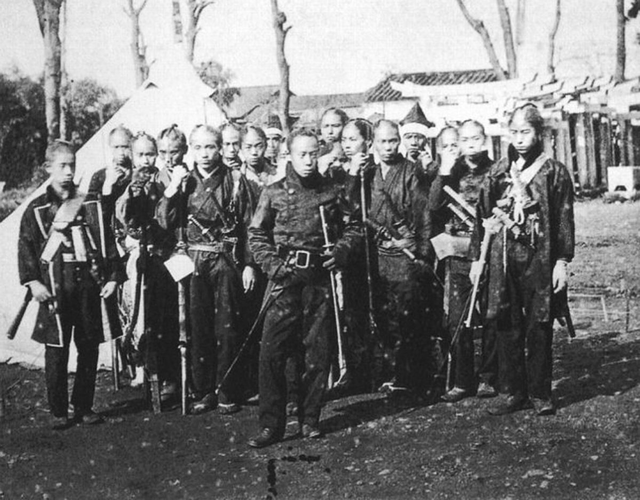Loading AI tools
This article contains the Shogun's Republic of Japan, Japanese Confederacy, and Shogunate of Japan.
Shogun's Republic of Japan | |
|---|---|
| Capital | Hakodate |
| Largest city | Sendai |
| Official languages | Japanese, Ainu |
| Demonym(s) | Japanese |
| Government | |
• Shogun of Japan | Tokugawa Yoshinobu |
• Prime Minister of Japan | Enomoto Takeaki |
| Today part of | Japan |

The Shogun's Republic of Japan (commonly refferred to as Shogunate of Japan or Japan) was a historical nation state that existed as a result of a ceasefire between Imperial forces to the south and the Shogunate forces in the north following the Boshin War from 1861 to 1904 when both the Empire of Japan and Shogun's Republic of Japan agreed to unification after the Japanese Unification War. It comprised the modern-day island of Hokkaido, as well as the northern half of the island of Honshu.
Japan under the leadership of the Tokugawa Shogunate and Prime Minister Enomoto Takeaki established itself as a dominant naval power, focusing its economy largely on the navy sector. Japan also underwent urbanisation but not at the rate of its southern counterpart. This was largely due to a significant population difference between the Imperials and Shogunates. Its military was very traditional, with samarai troops comprising around 80% of the military. The Shogunate military did not recieve guns until 1861 when southern Imperial Japanese troops invaded the Shogunate. Military aid was mainly recieved by the Russian Empire, helping the Shogunate modernise their army. The Russian Empire eventually declared war on the Empire of Japan in 1863 and an ultimatum was presented to the Imperialists which eventually opened up peace negotiations. The subsequent negotiations led to the unification of Japan with a dual-monarch system and the creation of the Japanese Confederacy.

Japan would end it's dual-monarch system in 1931, where a coup organised by the Shogunate army successfully overthrew the newly crowned Emperor Meiji, mainly due to the poor economy and suspended promised elections. Japan would become the Shogunate of Japan, a constitutional monarchy with Tokugawa Iesato as its Shogun.

The Shogun's Republic of Japan was declared swiftly after the conclusion of the Boshin War. Shogun Yoshinobu originally fought for the creation of a fully authoriarian state run by the Shogun, however, pressure from Western democracies denied this. Instead, Yoshinobu established a constitutional democracy with the Shogun as the monarch. Chosen as the Prime Minister was Enomoto Takeaki, and the Prime Minister role was set to be chosen by the Shogun each election, however, the Prime Minister must be from the Samurai class. An election would be held every five years to elect members of the Kominkan (People's House) comprising 111 seats and the Shogunke (Shogunate's House) comprising 19 seats of only Samurai.
The capital city was Hakodate on the island of Hokkaido. Yoshinobu chose Hakodate as it was deemed far enough away from Imperial harm. Sendai was an important city in the Shogun's Republic for trade and economic reasons.
Wikiwand in your browser!
Seamless Wikipedia browsing. On steroids.
Every time you click a link to Wikipedia, Wiktionary or Wikiquote in your browser's search results, it will show the modern Wikiwand interface.
Wikiwand extension is a five stars, simple, with minimum permission required to keep your browsing private, safe and transparent.